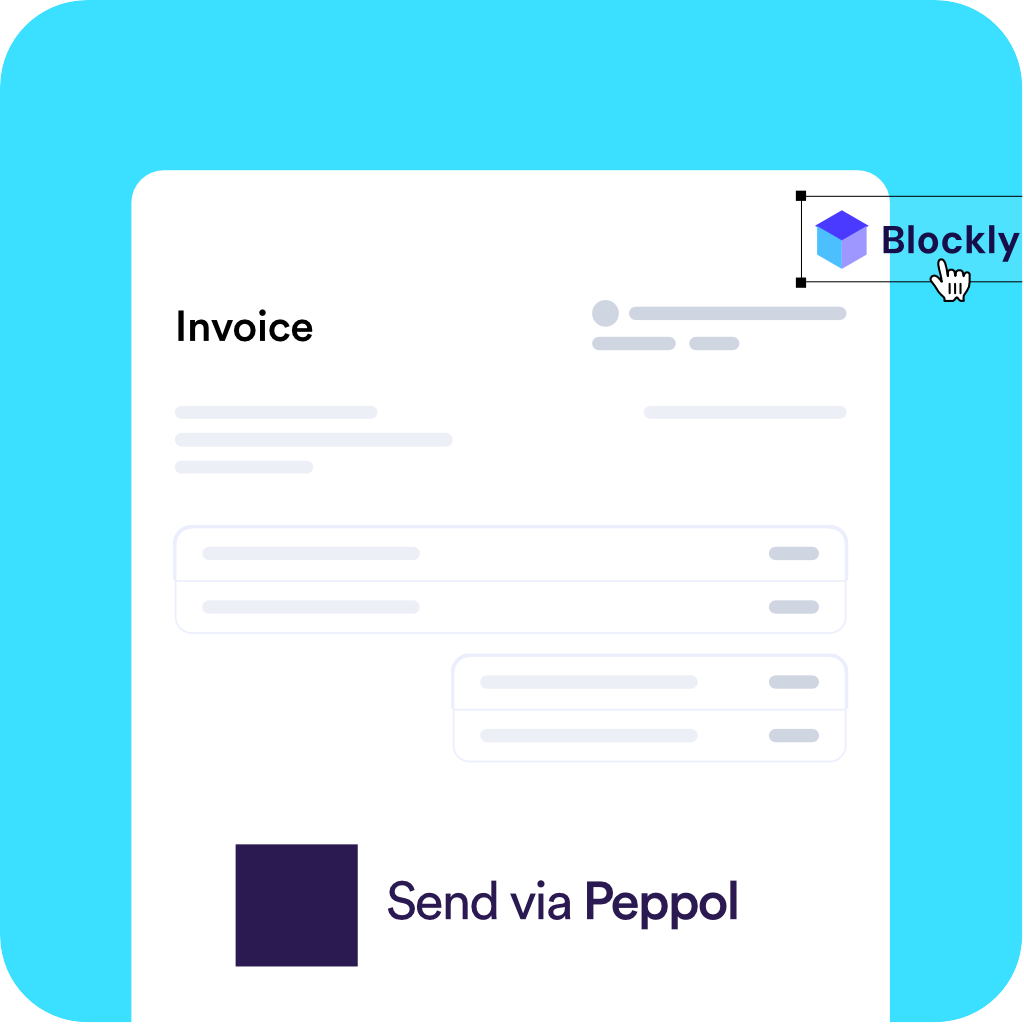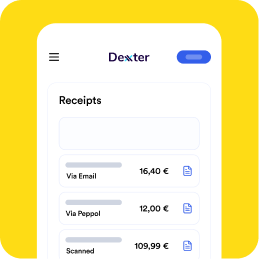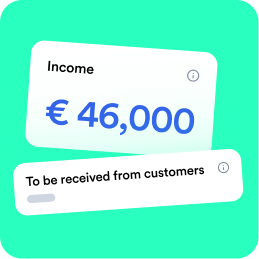Advance payments on my personal income tax, what exactly does that mean? And does everyone have to pay these?
What is an advance payment for sole proprietors? 🔎
To avoid receiving a huge sum of money only once a year, the Belgian government questions advance payments on personal income tax.
If you are an employee, then it is very simple. Your employer will set aside part of your salary every month as an advance on your personal income tax, known as withholding tax. At the end of the year, the government will then calculate the difference between what you already paid and what you owe. The difference is then refunded or you still have to pay extra.
In the case of sole proprietors, your income as a self-employed person is added to your income as an employee and taxed together.
However, as a self-employed person, there is no one who will make these advance payments for you. After all, you are your own employer. Therefore, you can start making advance payments yourself. The Belgian government will even start encouraging you to do this, as you will have to pay less tax.
Should I make advance payments? 🤷
Yes and no.
You are not legally required to do advance payments.
However, if you do not make advance payments, you will pay a tax increase. To avoid this, and sometimes even enjoy tax rebates, it is very important that you make your advance payments on time and in the right way.
Why should you make advance payments as a self-employed person?
There are two advantages to paying advance payments. Mental peace of mind is a benefit for everyone. For newly established sole proprietors in main occupation, there is also the receipt on any tax credits. In turn, for other sole proprietors, there is the avoidance of tax increments.
Mental rest💆
Have you already paid some of your taxes? Then the bank account from your self-employed activities is more in line with reality. After all, you still have to pay your taxes anyway. Instead of suddenly paying a big chunk at the end, this way you pay smaller amounts each time. That way you know better where you really stand and you won’t have any big surprises. Did you pay too little? Then your bill will still be a lot lower than if you had not paid an advance. Did you pay too much? Then of course you will be refunded the difference.
Tax increase📈
Remark: These increases do not apply to main professionals with newly established sole proprietors. For the first three years from the start-up of your sole proprietorship, as a self-employed in main occupation, you never have a tax increase!
On the profits from your sole proprietors, you pay personal income tax. On this personal income tax, the government will also charge a tax increase of 9% (income 2024)! (The calculations are slightly different, but approximate is sufficient). This still sounds a bit complex, but in a moment we will make it clearer with an example.
It is this tax increase that you can avoid by starting to make timely advance payments.
Simply put: if you pay enough in advance, you don’t have to pay this extra 9%.
Depending on when you made the advance payment, it will count for a certain percentage as a reduction. Below is the summary of these percentages for 2024, but we explain this draft further in the example!
| Date advance payments 2024 | Percentage ‘positive interest’ |
| 1 January – 10 April | 12% |
| 11 April – 10 July | 10% |
| 11 July – 10 October | 8% |
| 11 October – 20 December | 6% |
Sample calculation:
Luc set up his own business in 2015 as a self-employed in secondary occupation. At the end of 2024, he has to pay 3,000 euros in taxes on the income from his business. We ignore here for simplicity the income from his main occupation as it is not relevant here.
Maximum increase (without advance payment):
On top of the 3,000 euro taxes Luc has to pay, the tax increment is calculated. This is (approximately) about 9% from the 3,000 euro.
3,000 euros * 9% =270 euros
So if Luc did not pay any advances, he would pay an additional 270 euros.
Advances:
However, Luc opted for peace of mind and paid €1,000 as an advance for the first and second quarters. For the next two quarters, he paid only €500 as an advance. For each of these advances, the relevant percentage is applied. Thus, we arrive at the reduction below
Calculations reduction:
Quarter 1: 1,000 euros * 12% = 120 euros
Quarter 2: 1,000 euros * 10% = 100 euros
Quarter 3: 500 euros * 8% = 40 euros
Quarter 4: 500 euros * 6% = 30 euros
Total: 120 euros + 100 euros + 40 euros + 30 euros = 290 euros
So a total of 290 euros can be deducted from the increase. However, you can never deduct more from the increase than what you had to pay. Since 290 euro is more than 270 euro increase, Luc simply pays no increase this year.
Since Luc already paid his full 3,000 euro taxes as an advance, he will not pay any more taxes at the end of the year. Also, as we see above, his increase will not be applied.
Tax reduction (for newly established sole proprietors) 📉
Remark: These reductions only apply to self-employed in main occupation, during the first three years from the start-up of your sole proprietor business!
To encourage even start-up businesses to do advance payments anyway, the government has created tax reductions or bonuses. Since, as a self-employed in main occupation, you are exempted from the tax credit for the first three years, they cannot waive it. Instead, you get a tax credit based on the amount and timing of your advances.
| Date advance payments 2024 | Percentage ‘bonification’ |
| 1 January – 10 April | 6% |
| 11 April – 10 July | 5% |
| 11 July – 10 October | 4% |
| 11 October – 20 December | 3% |
Sample calculation:
An has set up her own business in 2024 as a self-employed person in main occupation.
At the end of the year, she has to pay 3,000 euros in taxes on the profits from her business.
Since An’s business is less than three years old and she is self-employed in main occupation, she should never have to pay increases. If she did not pay any advance, she would simply receive the settlement of EUR 3,000 at the end of the year.
Advance payments:
However, An also opted for peace of mind and paid 1,000 euros as an advance for the first and second quarters. For the next two quarters, she paid 500 euros as an advance. Her tax reduction is calculated on these amounts.
Calculations reduction:
Quarter 1: 1,000 euros * 6% = 60 euros
Quarter 2: 1000 euro * 5% = 50 euro
Quarter 3: 500 euro * 4% = 20 euro
Quarter 4: 500 euros * 3% = 15 euros
Total: €60 + €50 + €20 + €15 = €145
New taxes: 3,000 euros (original) – 145 euros (reduction) = 2,855 euros
An gets a reduction from 145 euros on her taxes.
When can I make an advance payment? ⌛
There are no fixed days when you have to do your advance payments. As mentioned above, the amounts for your reduction/avoidance of increase do depend from when you make your advance payments.
- 10 April 2024 for the first quarter at the latest
- 10 July 2024 for the second quarter at the latest
- no later than 10 October 2024 for the third quarter
- No later than 20 December 2024 for the fourth quarter
How do I make advance payments on income tax in Belgium?
The easiest way to do your advance payments is directly through the Federal Public Service Finance.
This way, you automatically pay to the right account number and with the right structured communication. You can also use a bank transfer. You then transfer to BE61 6792 0022 9117. However, you still have to search for the correct structured communication via MyMinfin.
We advise you to pay once quarterly and certainly not to wait until the last day. After all, there can always be a few days between your payment order and the receipt on that payment.

Never miss a tax deadline with Dexxter!
Through Dexxter ‘s accounting platform, your tax returns are automatically ready for you based on your income and expenses.
Try it out yourself for free via our 30-day trial period!












